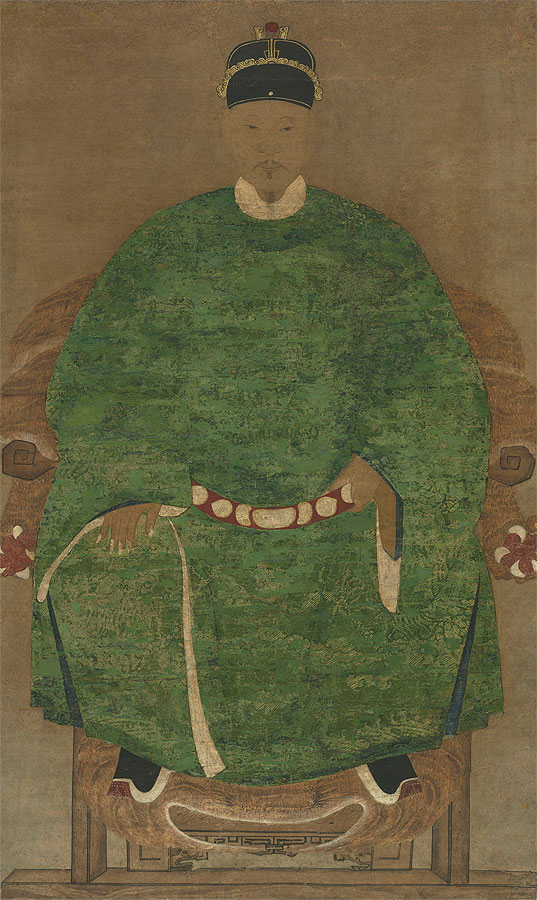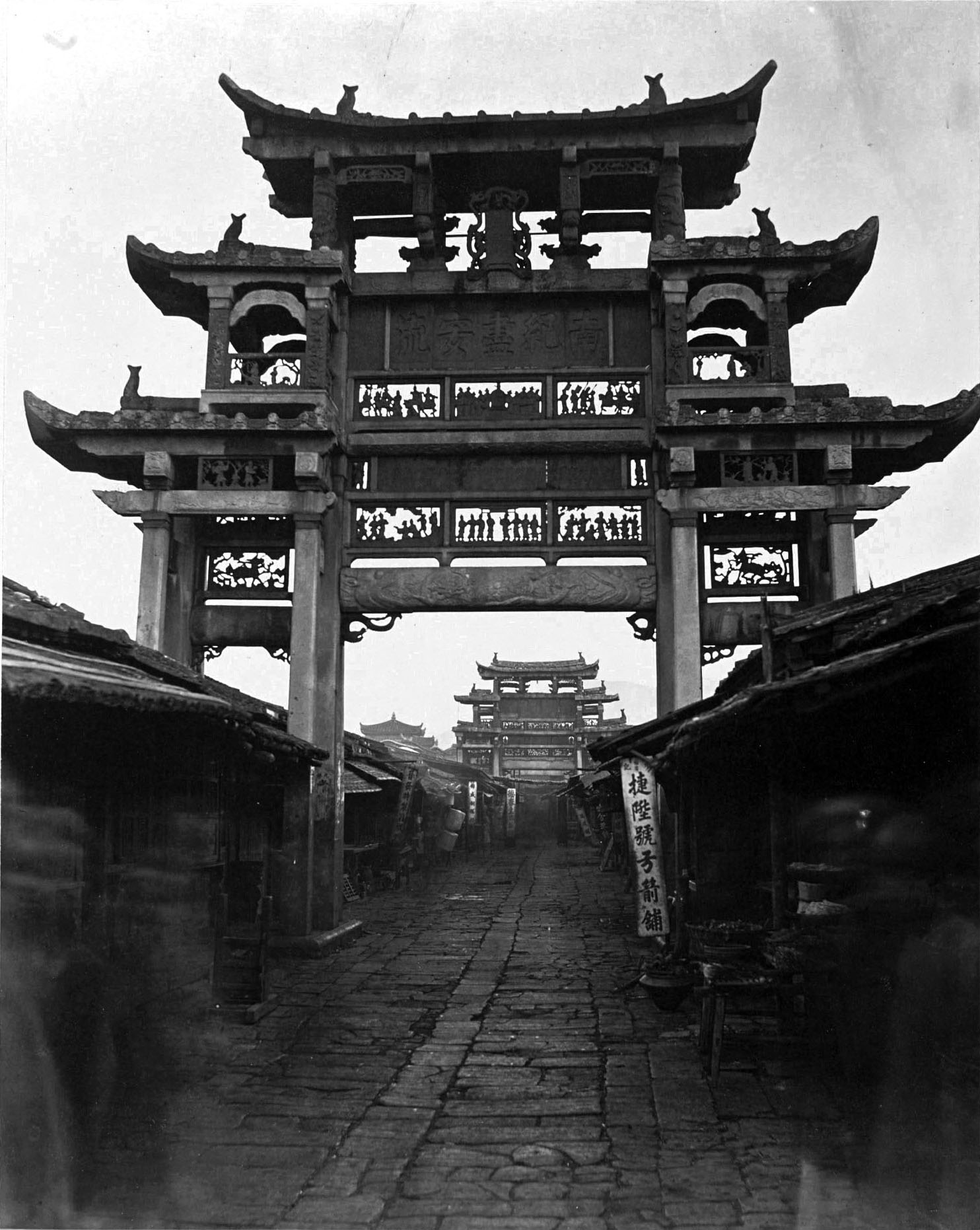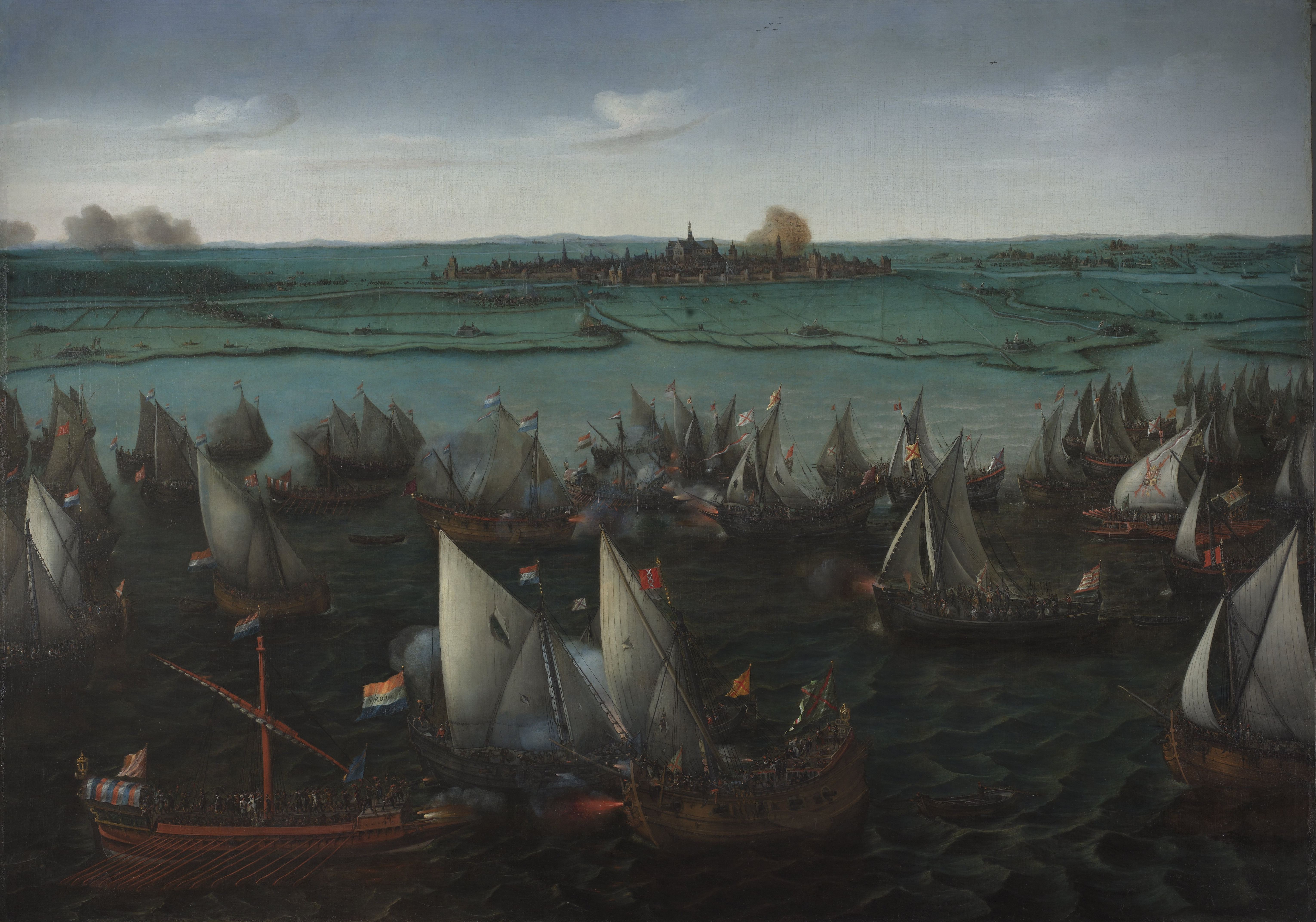|
3 October
Events Pre-1600 *2457 BC – Gaecheonjeol, Hwanung (환웅) purportedly descended from heaven. South Korea's National Foundation Day. *52 BC – Gallic Wars: Vercingetorix, leader of the Gauls, surrenders to the Romans under Julius Caesar, ending the siege and battle of Alesia. *42 BC – Liberators' civil war: Triumvirs Mark Antony and Octavian fight to a draw Caesar's assassins Brutus and Cassius in the first part of the Battle of Philippi, where Cassius commits suicide believing the battle is lost. * 382 – Roman Emperor Theodosius I concludes a peace treaty with the Goths and settles them in the Balkans. * 1392 – Muhammed VII becomes the twelfth sultan of the Emirate of Granada. *1574 – The Siege of Leiden is lifted by the ''Watergeuzen''. 1601–1900 *1683 – Qing dynasty naval commander Shi Lang receives the surrender of the Tungning kingdom on Taiwan after the Battle of Penghu. *1712 – The Duke of Montrose issues a warrant for t ... [...More Info...] [...Related Items...] OR: [Wikipedia] [Google] [Baidu] |
2457 BC
The 25th century BC was a century that lasted from the year 2500 BC to 2401 BC. Events * c. 2900–2334 BC: Mesopotamian wars of the Early Dynastic Period (Mesopotamia), Early Dynastic period. * c. 2560 BC: Construction of the Great Pyramid of Giza is completed. * c. 2500 BC: Rice was first introduced to Malaysia * c. 2500 BC: Scribe, Scribal schools flourish throughout Sumer. * c. 2500 BC: Assyria is established. * c. 2500 BC: Cylinder seal from Sumer and its impression are made. It is now in the Metropolitan Museum of Art, New York. * c. 2500 BC: Excavation and development of the Hypogeum of Ħal-Saflieni at Paola, Malta, a subterranean temple complex subsequently used as a necropolis. * c. 2500 BC: The Pyramid of Khafre, Giza, is built. * c. 2500 BC: The sculpture Khafre Enthroned is made. * c. 2500 BC: People in Peru rely on fish and mussels for food. *c. 2500 BC: Evidence of long-distance trade routes in South America. * c. 2500 BC: Skara Brae is abandoned after approximat ... [...More Info...] [...Related Items...] OR: [Wikipedia] [Google] [Baidu] |
Goths
The Goths ( got, 𐌲𐌿𐍄𐌸𐌹𐌿𐌳𐌰, translit=''Gutþiuda''; la, Gothi, grc-gre, Γότθοι, Gótthoi) were a Germanic people who played a major role in the fall of the Western Roman Empire and the emergence of medieval Europe. In his book '' Getica'' (c. 551), the historian Jordanes writes that the Goths originated in southern Scandinavia, but the accuracy of this account is unclear. A people called the ''Gutones''possibly early Gothsare documented living near the lower Vistula River in the 1st century, where they are associated with the archaeological Wielbark culture. From the 2nd century, the Wielbark culture expanded southwards towards the Black Sea in what has been associated with Gothic migration, and by the late 3rd century it contributed to the formation of the Chernyakhov culture. By the 4th century at the latest, several Gothic groups were distinguishable, among whom the Thervingi and Greuthungi were the most powerful. During this time, Wulfila bega ... [...More Info...] [...Related Items...] OR: [Wikipedia] [Google] [Baidu] |
1712
In the Swedish calendar it began as a leap year starting on Monday and remained so until Thursday, February 29. By adding a second leap day (Friday, February 30) Sweden reverted to the Julian calendar and the rest of the year (from Saturday, March 1) was in sync with the Julian calendar. Sweden finally made the switch from the Julian to the Gregorian calendar in 1753. This year has 367 days. Events January–March * January 8 – Total eclipse of the sun visible from * January 12 – The premiere of the opera ''Idoménée'' by André Campra takes place at the Théâtre du Palais-Royal in Paris. * January 16 – A military engineering school is established in Moscow which is to become the A.F. Mozhaysky Military-Space Academy. * January 26 – The Old Pummerin, a 18,161 kg bell newly installed in the Stephansdom, St. Stephen's Cathedral, in Vienna, is rung for the first time to mark the entry of Charles VI to Vienna from Frankfurt after his co ... [...More Info...] [...Related Items...] OR: [Wikipedia] [Google] [Baidu] |
Battle Of Penghu
The Battle of Penghu () was a naval battle fought in 1683 between the Qing dynasty and the Kingdom of Tungning. The Qing admiral Shi Lang led a fleet to attack the Tungning forces in Penghu. Each side possessed more than 200 warships. The Tungning admiral Liu Guoxuan was outmaneuvered by Shi Lang, whose forces outnumbered him three to one. Liu surrendered when his flagship ran out of ammunition and fled to Taiwan. The loss of Penghu resulted in the surrender of Zheng Keshuang, the last king of Tungning, to the Qing dynasty. Prelude Kangxi Emperor of the Qing dynasty assigned Yao Qisheng as Viceroy of Fujian in 1678. Yao Qisheng assisted Kangxi Emperor to execute the Sea Ban order: "Not even a plank is allowed to enter the water." () until 1683, to weaken their economy so cut off all the connection of trade with Tungning Kingdom. By 1683, Kangxi Emperor had stopped all attempts at negotiation with Tungning. Yao Qisheng also recommended Shi Lang as the commander-in-chief of the ... [...More Info...] [...Related Items...] OR: [Wikipedia] [Google] [Baidu] |
Kingdom Of Tungning
The Kingdom of Tungning (), also known as Tywan by the British at the time, was a dynastic maritime state that ruled part of southwestern Taiwan and the Penghu islands between 1661 and 1683. It is the first predominantly Han Chinese state in Taiwanese history. At its zenith, the kingdom's maritime power dominated varying extents of coastal regions of southeastern China and controlled the major sea lanes across both China Seas, and its vast trade network stretched from Japan to Southeast Asia. The kingdom was founded by Koxinga (Zheng Chenggong) after seizing control of Taiwan, a foreign land at the time outside China's boundaries, from Dutch rule. Zheng hoped to restore the Ming dynasty in Mainland China, when the Ming remnants' rump state in southern China was progressively conquered by the Manchu-led Qing dynasty. The Zheng dynasty used the island of Taiwan as a military base for their Ming loyalist movement which aimed to reclaim mainland China from the Qing. Under Zheng ... [...More Info...] [...Related Items...] OR: [Wikipedia] [Google] [Baidu] |
Shi Lang
Shi Lang (1621–1696), Marquis Jinghai, also known as Secoe or Sego, was a Chinese admiral who served under the Ming and Qing dynasties in the 17th century. He was the commander-in-chief of the Qing fleets which destroyed the power of Zheng Chenggong's descendants in the 1660s, and led the conquest of the Zheng family's Kingdom of Tungning in Taiwan in 1683. Shi later governed part of Taiwan as a marquis. Early life and career Shi Lang was born to a distinguished lineage in Fujian, in 1621. He studied military strategy in his youth, and became particularly proficient in naval warfare. He was also famous for his strength, ferocity and martial skills in battle. Kangxi Emperor once described him as a fierce warrior who was also highly adept in military command skills, however, he was a blunt and rude person who lacked basic manners and courtesy. After fighting a number of minor operations locally with his father, he joined Zheng Zhilong's naval fleet as captain of the left vanguard ... [...More Info...] [...Related Items...] OR: [Wikipedia] [Google] [Baidu] |
Qing Dynasty
The Qing dynasty ( ), officially the Great Qing,, was a Manchu-led imperial dynasty of China and the last orthodox dynasty in Chinese history. It emerged from the Later Jin dynasty founded by the Jianzhou Jurchens, a Tungusic-speaking ethnic group who unified other Jurchen tribes to form a new "Manchu" ethnic identity. The dynasty was officially proclaimed in 1636 in Manchuria (modern-day Northeast China and Outer Manchuria). It seized control of Beijing in 1644, then later expanded its rule over the whole of China proper and Taiwan, and finally expanded into Inner Asia. The dynasty lasted until 1912 when it was overthrown in the Xinhai Revolution. In orthodox Chinese historiography, the Qing dynasty was preceded by the Ming dynasty and succeeded by the Republic of China. The multiethnic Qing dynasty lasted for almost three centuries and assembled the territorial base for modern China. It was the largest imperial dynasty in the history of China and in 1790 the f ... [...More Info...] [...Related Items...] OR: [Wikipedia] [Google] [Baidu] |
1683
Events January–March * January 5 – The Brandenburger Gold Coast, Brandenburger—African Company, of the German state of Brandenburg, signs a treaty with representatives of the Ahanta people, Ahanta tribe (in what is now Ghana), to establish the fort and settlement of Groß Friedrichsburg, in honor of Frederick William, Elector of Brandenburg. The location is later renamed Princes Town, Ghana, Princes Town, also called Pokesu. * January 6 – The tragic opera ''Phaëton (Lully), Phaëton'', written by Jean-Baptiste Lully and Philippe Quinault, is premiered at the Palace of Versailles. * January 27 – Gove's Rebellion breaks out in the Province of New Hampshire in North America as a revolt against the Royal Governor, Edward Cranfield. Most of the participants, and their leader Edward Gove, are arrested. Gowe is convicted of treason but pardoned three years later. * February 7 – The opera ''Giustino (Legrenzi), Giustino'' by Giovanni Legrenzi an ... [...More Info...] [...Related Items...] OR: [Wikipedia] [Google] [Baidu] |
Watergeuzen
Geuzen (; ; french: Les Gueux) was a name assumed by the confederacy of Calvinist Dutch nobles, who from 1566 opposed Spanish rule in the Netherlands. The most successful group of them operated at sea, and so were called Watergeuzen (; ; french: links=no, Gueux de mer). In the Eighty Years' War, the Capture of Brielle by the Watergeuzen in 1572 provided the first foothold on land for the rebels, who would conquer the northern Netherlands and establish an independent Dutch Republic. They can be considered either as privateers or pirates, depending on the circumstances or motivations. Origin of the name The leaders of the nobles who signed a solemn league known as the Compromise of Nobles, by which they bound themselves to assist in defending the rights and liberties of the Netherlands against the civil and religious despotism of Philip II of Spain, were Louis of Nassau and Hendrick van Brederode. On 5 April 1566, permission was obtained for the confederates to present a petition ... [...More Info...] [...Related Items...] OR: [Wikipedia] [Google] [Baidu] |
Siege Of Leiden
The siege of Leiden occurred during the Eighty Years' War and the Anglo–Spanish War in 1573 and 1574, when the Spanish under Francisco de Valdez attempted to capture the rebellious city of Leiden, South Holland, the Netherlands. The siege failed when the city was successfully relieved in October 1574. Background In the war that had broken out (eventually called the Eighty Years' War), Dutch rebels took up arms against the Habsburg king of Spain, whose family had inherited the Seventeen Provinces of the Netherlands. Most of the counties of Holland and Zeeland were occupied by rebels in 1572, who sought to end the harsh rule of the Spanish Duke of Alba, governor-general of the Netherlands. The territory had a high density of cities, which were protected by defense works and by the low-lying boglands, which could easily be flooded by opening the dykes and letting in the sea. The Duke of Alba tried to break resistance using brute force. He used Amsterdam as a base, as this was t ... [...More Info...] [...Related Items...] OR: [Wikipedia] [Google] [Baidu] |
1574
__NOTOC__ Year 1574 ( MDLXXIV) was a common year starting on Friday (link will display the full calendar) of the Julian calendar. Events January–June * February 23 – The fifth War of Religion against the Huguenots begins in France. * April 14 – Battle of Mookerheyde: Spanish forces under Sancho de Avila defeat the rebel forces of Louis of Nassau, who is killed. * May 30 – On the death of King Charles IX of France of a tubercular condition at the Château de Vincennes, he is succeeded by his brother King Henry of Poland, who becomes King Henry III of France. His mother, Catherine de' Medici, acts as Regent, until Henry arrives from Poland. * June 10 – Manila, Philippines gains cityhood. July–December * August 30 – Guru Ram Das becomes the fourth of the Sikh gurus. * September – A plot to assassinate John III of Sweden is discovered, headed by Charles de Mornay and implicating Charles Dancay, Hogenskild Bielke, Gusta ... [...More Info...] [...Related Items...] OR: [Wikipedia] [Google] [Baidu] |
Emirate Of Granada
The Emirate of Granada ( ar, إمارة غرﻧﺎﻃﺔ, Imārat Ġarnāṭah), also known as the Nasrid Kingdom of Granada ( es, Reino Nazarí de Granada), was an Emirate, Islamic realm in southern Iberia during the Late Middle Ages. It was the last independent Muslim state in Western Europe. Muslims had been present in the Iberian Peninsula, which they called ''Al-Andalus'', since the early eighth century. At its greatest geographical extent, Muslim-controlled territory occupied most of the peninsula and part of present-day southern France. From the ninth to the tenth century, under the Caliphate of Córdoba, the region was one of the most prosperous and advanced in Europe. Conflict with the northern Christian kingdoms was recurrent, while mounting civil strife led to a Taifa, fragmenting of Muslim states in the early eleventh century. This marked a precipitous decline in Muslim power and facilitated the centuries-long Christian ''Reconquista.'' By 1230, the Almohad Caliphate ... [...More Info...] [...Related Items...] OR: [Wikipedia] [Google] [Baidu] |
.jpg)






